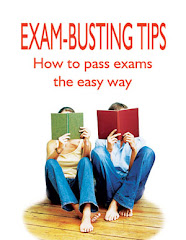There is much more to eye health than the ability to see clearly.
WHAT qualities define a healthy eye? “The ability to see clearly, of course,” many would say.
As most of us equate visual acuity to good vision, that, is certainly the best guess. And it could be observed in the way most visits to the local optometrists are prompted by poor eyesight such as the inability to read tiny prints on the blackboard or signboards far away.
 A good optometrist should be able to properly assess an eye and prescribe eye care solutions according to an individual's vision needs.
A good optometrist should be able to properly assess an eye and prescribe eye care solutions according to an individual's vision needs.In fact, visual acuity is just a small part of eye health. There are many other aspects to it, including the ability to identify colours (colour vision), the ability to focus on objects near or far with both eyes (binocular vision) and the ability to see in low lights (night vision).
Many of us fail to realise that good vision is more than just good eyesight, says Better Vision retail operations manager Richard Loh, who is an optometrist by training.
More worrying is the trend where commercialised eye care providers engage in price wars as the Malaysian optical market targets a more product and brand-conscious consumer base, marketing eye care products as fashion accessories.
One of the observations General Manager Benjamin Pwee made was the increasing trend of brand-centric customers.
He notes, “Many of our customers are only looking at the brand (of eyewear)... but there is little concern about the quality of the lens that goes with (it). They spend a lot of time looking for a brand, but because the lens is transparent, and there isn’t a brand on the lens, they are not aware of the quality of the lens that they are buying.
“Very few customers demand the quality in terms of professional services that they should get.”
In a media briefing that is part of their patient education programme, Loh and Pwee sets out to shed some light on what constitutes a complete eye test, and what an optometrist can do to help you meet your vision needs.
First of all, it is important to remember that vision needs vary according to the age, health condition, occupation and lifestyle of a person, says Pwee.
For instance, a footballer or badminton player needs sharper vision to see far objects and a frequent driver needs good binocular vision to judge spatial distances to overtake or park his/her car properly.
As every eye is unique and visual needs vary, a good optometrist should be able to properly assess an eye and prescribe eye care solutions according to an individual’s vision needs, says Loh.
In a series of eye tests in its 12-step assessment called the BVAX accuracy system assessment test, Better Vision seeks to provide its customers with an accurate diagnosis using all or some of the tests mentioned below.
Step 1: Patient evaluation
A complete patient evaluation will tell the optometrist the patient’s main reason for the visit, history of previous eye examination, current spectacle/contact lens prescription and optical needs for occupation and hobbies. With the right questions answered, half the story of your eye has already been told, and the optometrist will be able to focus on suitable tests and provide appropriate solutions.
Step 2: Objective refraction test
This test is done to assess if your current spectacle or contact lens prescription has changed. However, as this is only a rough estimation, the results from this test alone is not enough to be used to prescribe spectacles or contact lenses. A subsequent subjective refraction test will be required for a more accurate assessment.
Step 3: Subjective refraction test
This is a more accurate assessment for short (myopia) or long (hyperopia) sightedness. The results from this test will be compared to your current prescription to determine whether you need to wear glasses or change your existing pair.
Step 4: Fan chart and cross cylinder
This test is to evaluate the presence or power and angle of astigmatism a person has. Astigmatism occurs when the transparent front layer of the eye, the cornea, is not evenly curved. According to Mayoclinic.com, symptoms of astigmatism include distortion in portions of your visual field, blurring of vertical, horizontal or diagonal lines, eyestrain or fatigue and headaches.
Step 5: Visual acuity test
The visual acuity test assess a person’s best possible vision performance. According to Loh, a best vision performance may not necessary mean the sharpest vision, but a vision that will cater best to your vision needs.
Step 6: Duo-chrome test
The duo-chrome test checks whether your prescription lenses overcorrects or undercorrects your short- or long-sightedness.
Step 7: Binocular balancing
This test ensures that both eyes are equally balanced in clarity or sharpness so that you can have a comfortable vision. If each eye sees with different clarity and the binocular balancing is not done, the brain will have difficulty in fusing the images together.
Step 8: Near vision test
This is a test to assess if a person (usually 38 years and above) needs a reading (long vision) prescription. Generally this will be tested at a distance where you normally do your reading. For example, a person who plays a piano and a person who needs to read books constantly has different near vision needs.
Step 9: Colour vision test
As its name implies, this test determines if a person can discern one colour from the other (the most common colour vision deficiency is the inability to differentiate red from green).
Step 10: Binocular vision assessment
This is where the optometrist assesses if there are any abnormalities with the eye muscles. These abnormalities can cause, among others, double vision, headaches or dizziness, difficulty in reading and lack of depth perception.
Step 11: Vision analysis
After all the steps are carried out, the optometrist will review and analyse the data obtained and make final adjustments to the prescription, if necessary.
Step 12: Patient management
The optometrist will provide customised solutions for their vision needs. Should a patient be diagnosed with signs of eye diseases or has symptoms of another underlying disease, he/she will be referred to an eye doctor or a specialist.
Besides these 12 steps, other customised tests, such as the Amsler chart or visual field test (for age-related macular degeneration problems, glaucoma and diabetic retinopathy) and Pelli Robson contrast sensitivity test (how well we see large, faint objects around us) can be done to cater for special vision needs of the elderly, young, contact lens wearers, drivers and professional golfers.
Usually, you will be able to get the objective refraction, subjective refraction, the fan chart and cross cylinder, visual acuity , duo-chrome, binocular balancing and colour vision tests in other optical stores.
The trick is to find an optometrist who is able to analyse the results of the test accurately and prescribe eye care solutions suited to your lifestyle and vision needs.
“There is no, and there should be no, one-size-fits-all approach to eye testing and assessment,” says Pwee.






























No comments:
Post a Comment